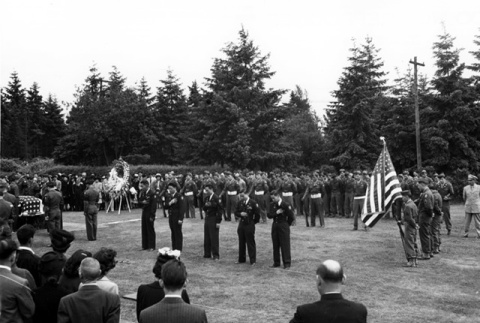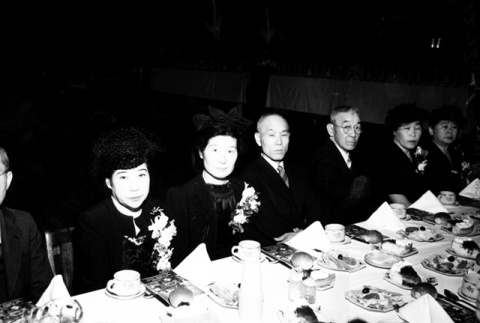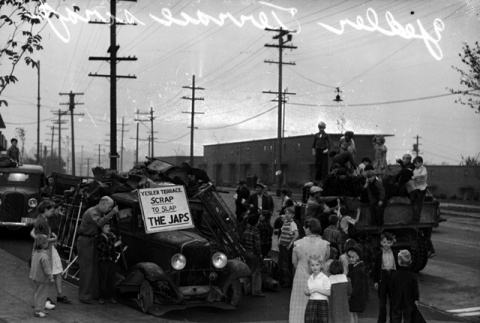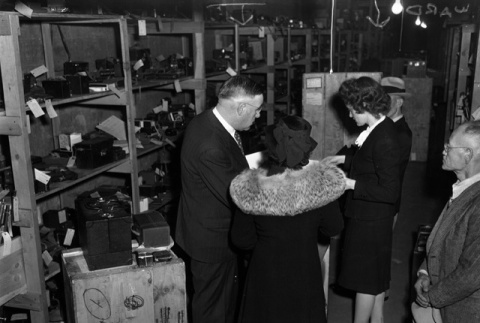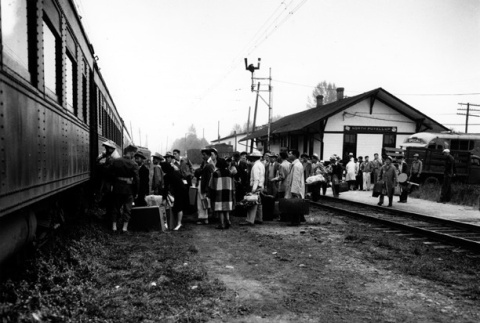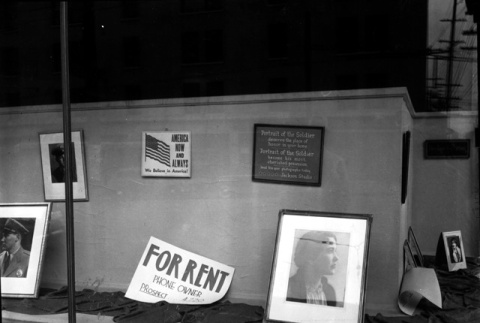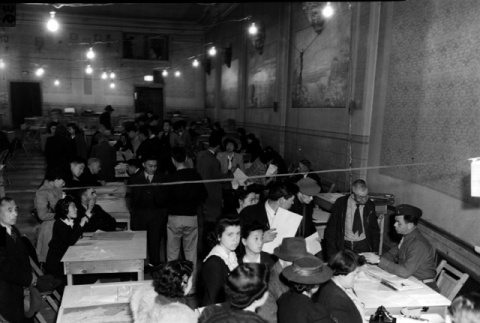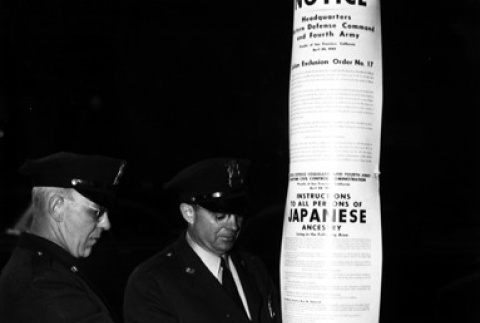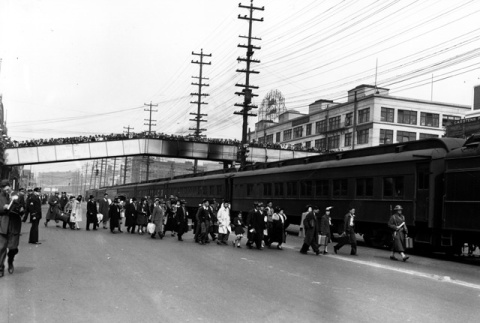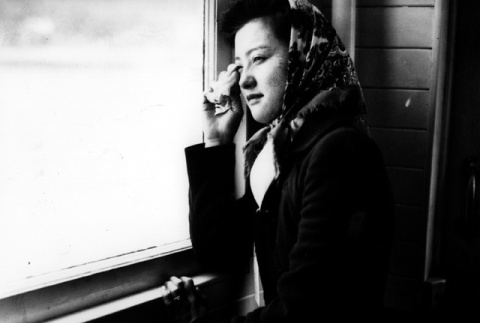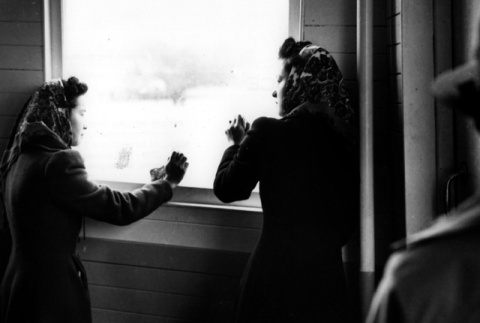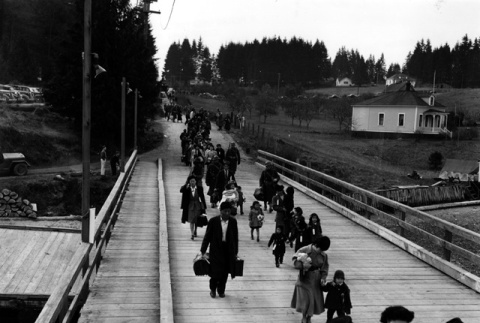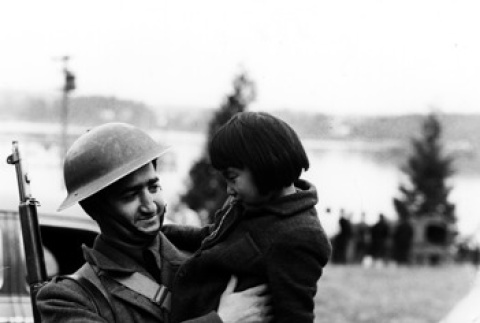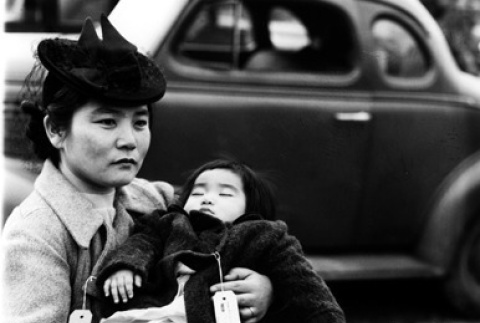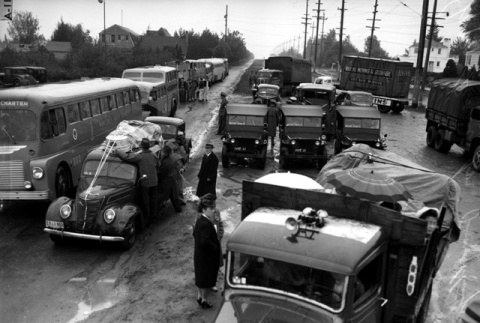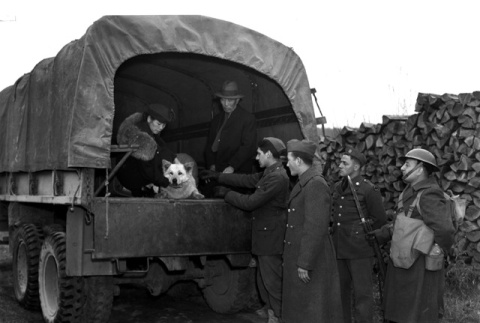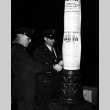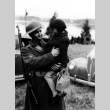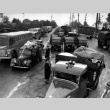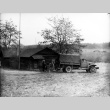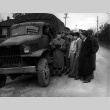Museum of History & Industry Collection ddr-densho-36
63 items
63 items
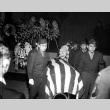
img
Funeral service for a Nisei soldier (ddr-densho-36-1)
This service for a Nisei soldier was held at the Seattle Buddhist Church.
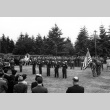
img
Funeral service for a Nisei soldier (ddr-densho-36-2)
Funeral service for a Nisei soldier at the Washelli Cemetery.

img
Nisei Memorial Dinner (ddr-densho-36-3)
Mr. and Mrs. Shinichi Seike (placement unknown) attend the Nisei Memorial Dinner.
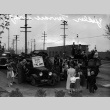
img
Scrap metal donation (ddr-densho-36-4)
These people are donating scrap metal at Yesler Terrace, which was next to the pre-World War II Nihonmachi (Japantown) area of Seattle, Washington.
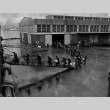
img
Japanese Americans board ship bound for Hawaii (ddr-densho-36-5)
These Japanese Americans are returning to Hawaii from Seattle, Washington, pier 42.
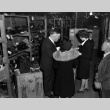
img
Couple reclaiming property (ddr-densho-36-6)
Japanese Americans waiting to reclaim their property after World War II.
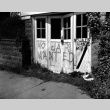
img
Racial epithet (ddr-densho-36-7)
This racial epithet was painted on the garage door of a Japanese American. The photo may have been taken during the resettlement period.
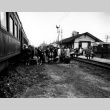
img
En route to Manzanar Assembly Center (ddr-densho-36-8)
Japanese Americans from Bainbridge Island, Washington are being transported to the Manzanar Assembly Center, California. Manzanar Assembly Center became a WRA incarceration camp on June 1, 1942.

img
Nihonmachi (Japantown) after mass removal (ddr-densho-36-9)
The stores on this block of Sixth Avenue South were closed and boarded up when their Japanese American operators were removed.
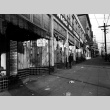
img
Nihonmachi (Japantown) after mass removal (ddr-densho-36-10)
The Higo Ten-Cent Store, located on Jackson Street. The Murakamis were able to reopen their store after the war because they were able to pay property taxes while interned. Higo Variety Store was run by Aya and Masako Murakami after the war.
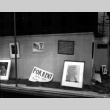
img
Nihonmachi (Japantown) after mass removal (ddr-densho-36-11)
This is the window of the Jackson Photo Studio, located at 624 Jackson Street. The studio was closed when the Japanese American operators were incarcerated. Note the "For Rent" sign in the window and the sign with the American flag.

img
Nihonmachi during mass removal (ddr-densho-36-12)
This is a window front in Seattle's Nihonmachi during the mass removal. Once the incarceration became inevitable, "evacuation" sales were commonplace. Japanese Americans, unsure of the future and knowing they could take into the camps only what they could carry, were forced to sell their real and personal property in one week. Many buyers, knowing the …

img
Mass removal processing center (ddr-densho-36-13)
Original caption from the Seattle Post-Intelligencer: Novel audience--Scene in the old theater at 1319 Rainier Ave. which has been converted into a civil control station for evacuation of Japanese from Seattle this week. The Japanese passed from table to table and when the "show" was over they were ready for their trip to the assembly center …
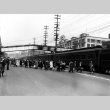
img
Japanese Americans boarding train for Manzanar, California (ddr-densho-36-15)
Japanese Americans from Bainbridge Island, Washington are being transported to the Manzanar Assembly Center, California.
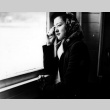
img
Mass removal (ddr-densho-36-16)
Sumiko Furuta of Bainbridge Island, Washington, on a special ferry to Seattle. From Seattle, she will board a train headed for Manzanar Assembly Center, California.
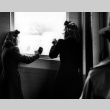
img
Mass removal (ddr-densho-36-17)
Ritsuko Terayama (left) and Sumiko Furuta as they leave the island on a ferryboat. (Lucille Galbraith, Bainbridge Island Japanese American Community (BIJAC). On March 30, 1942, Japanese Americans from Bainbridge Island became one of the first groups to be excluded, presumably because of their proximity to the Puget Sound Navy Yard (Terminal Island, near Los Angeles, …

img
Mass removal (ddr-densho-36-19)
Yoshie Terayama (left) and Ritsuko Terayama (middle) with a friend from school. Original museum cataloging information: Japanese-American women with Caucasian woman at assembly point.
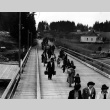
img
Mass removal (ddr-densho-36-20)
Japanese Americans walk down the Eagledale ferry dock to catch a special ferry to Seattle.
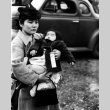

img
Mass removal (ddr-densho-36-24)
Mr. and Mrs. Moji (inside truck) and their dog, King. Japanese Americans were not allowed to take family pets with them to camp and, if they were lucky, left the animals with friends or neighbors. King was very devoted to the Mojis, as this photo indicates. Apparently, the husky bared his fangs at soldiers who tried …

